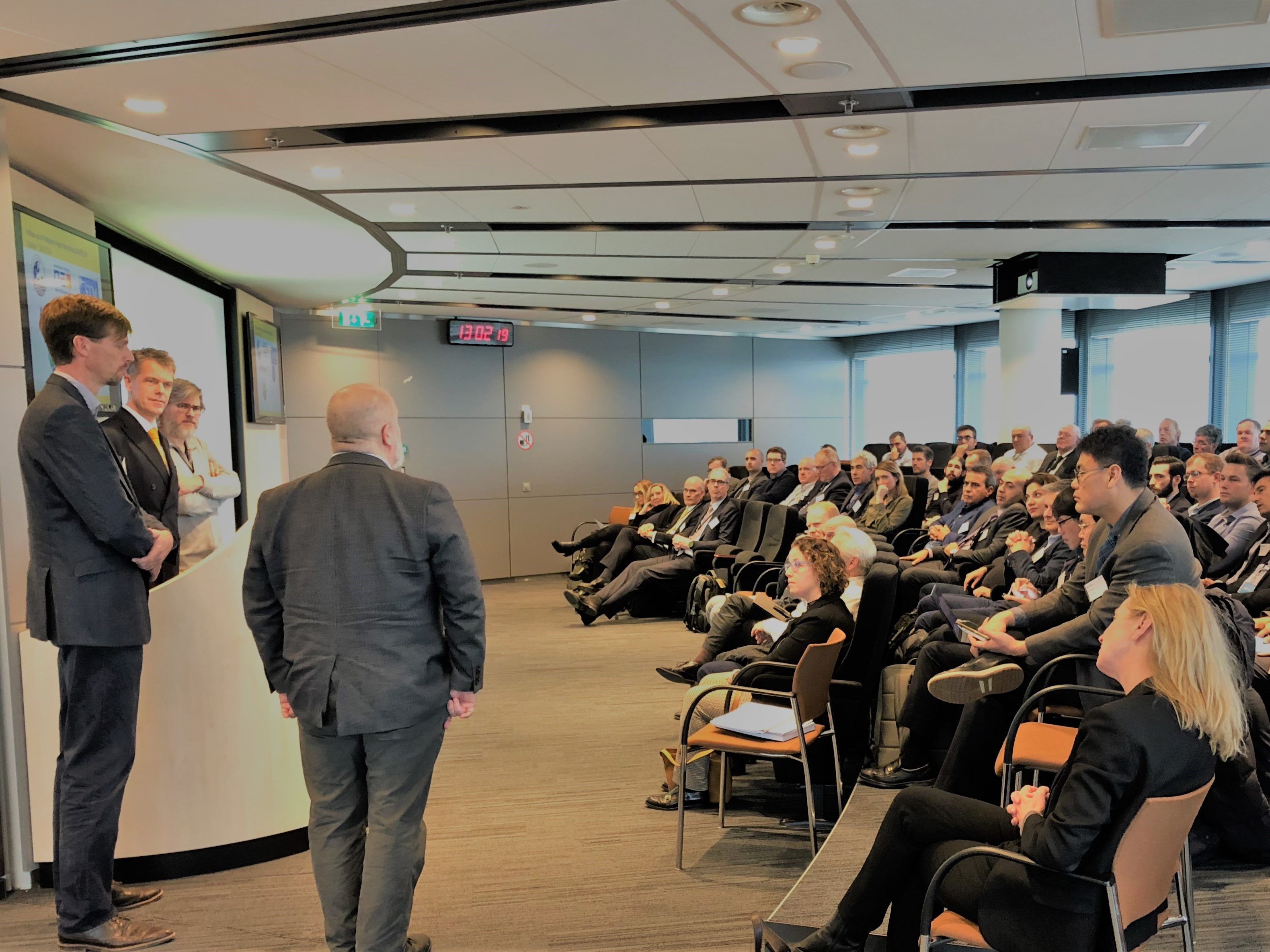PRESS RELEASE: Working group composed of ports, shipowners, technology providers, leading engine and automation manufacturers work with the International Taskforce, GS1, UKHO, EHMC, STM Validation project, SMART and SESAME to “allow machines to understand each other” in terms of shared port call data; BIMCO studies adoption of an STM clause that will split the benefits of a vessel just-in-time arrival.

In an important step forward towards harmonisation of port call data, participants in only the second ever industry-wide global workshop of its kind achieved initial consensus on data definition proposals used for recording event data of a port call, largely based on existing ISO standards as well as EPCIS, which is also an ISO standard.
Some 80 attendees attended the workshop representing shipping, ports, suppliers of navigation, terminal operating and blockchain systems as well as representatives of relevant international maritime organizations.
The scope of port call data includes vessel – berth compatibility, (safe port) information, and information related to availability of berth, fairway, nautical and vessel services. It also contemplates event data essential for end-to-end supply chain visibility of cargo.
“The Port Call process has been defined after four years of work by the industry-wide Port Call Optimization Taskforce” comments Captain Ben Van Scherpenzeel who hosted the meeting in Rotterdam on 29th November. “As a next step, all participants agreed today that there is a need to digitise, simplify and optimise our maritime industry by having standardised digital data available, allowing for real time updates in the port call process. By moving forward together with a robust set of globally-agreed port call data standards, we can assist all parties in investing into solutions”
Endorsement by both industry players and regulatory bodies alikeThe view was echoed by both Wärtsilä and Kongsberg, both of whom who have invested into engine and automation technological innovations in both the Sea Traffic Management (STM) validation real time data exchange and SESAME e-navigation projects respectively and who were, in the words of the Kongsberg attendee “looking for a return on these investments”
The initiative was also endorsed by attending members of the IMO, verifying the project’s relevance in achieving the IMO’s Marine Environment Protection Committee (MEPCs) target to reduce at least 50% greenhouse gas (GHG) emissions from the global shipping sector by 2050, compared to 2008.
A step forward to incentivise charterers and shipowners to aim at just-in-time arrivals
BIMCO, whose commercial contracts account for 85% of seaborne world trade, made an important contribution to the workshop. Participants were introduced to two clauses being created to incentivise the sharing of information regarding the vessels arrival time and the potential ability for charterers to request – under specific circumstances – for shipowners to adjust their speed to suit arrival time. This incentive, which would use a common-use Traffic Management System, would be built around shared benefits for on-time arrival at the port prior to berthing. Further work is being conducted by BIMCO to motivate the inclusion of port and hinterland operators as additional parties to such clauses, to move towards berth and equipment availability on a just-in-time basis.

Captain Ben Van Scherpenzeel welcomes the industry-wide workshop
The next step – interconnectivity and awareness building
Further debate at the workshop focussed on the interoperability of the platforms and systems developed for vessels to communicate with shore and for the port players to share a common approach towards data sharing on each vessel port call. The workgroup also agreed to conduct a gap analysis where the standards proposed are yet to be incorporated into relevant ISO standards. Further to feedback from the International Hydrographic Organization and other parties, it was also agreed to establish a clear guidance and eventual training program for ports and terminals across the world in applying the standards.
International Association of Ports and Harbors: endorser to key facilitator
Commenting on the progress made, IAPH Managing Director Patrick Verhoeven stated: “the open dialogue between all players involved in shipping and ports in this workshop demonstrates a willingness to use standards and technology for common benefit in improving port call efficiency. This will in turn reduce industry emissions, a key cornerstone of our World Ports Sustainability Program. The IAPH endorses the initiative, and will become a key facilitator in implementing the Port Optimization Taskforce project amongst its membership”

































